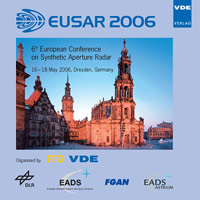GPR-SAR signal processing for Humanitarian Landmine Detection
Konferenz: EUSAR 2006 - 6th European Conference on Synthetic Aperture Radar
16.05.2006 - 18.05.2006 in Dresden, Germany
Tagungsband: EUSAR 2006
Seiten: 4Sprache: EnglischTyp: PDF
Persönliche VDE-Mitglieder erhalten auf diesen Artikel 10% Rabatt
Autoren:
Sato, Motoyuki; Feng, Xuan; Kobayashi, Takao (Tohoku University, Japan)
Kobayashi, Takao (JST, Japan)
Inhalt:
We are developing Ground Penetrating Radar (GPR) system for humanitarian landmine detection. A GPR prototype system: SAR-GPR was completed, and it has been evaluated by local NGO deminers and technical advisers in various locations including Afghanistan and Croatia. This system employs SAR processing for reduction of ground clutter and 3-D image reconstruction. GPR antennas will be scanned above a rough ground surface. The height variation of ground surface and incorrect velocity assumption in the soil will affect imaging processing of landmine. To eliminate these effects, ground surface topography and velocity model are needed. Based on multioffset common middle point (CMP) data acquired by SAR-GPR, we estimate a velocity model using the velocity spectrum technique. Also after pre-stack migration, the ground surface can be imaged clearly. To compensate landmine image deformation due to height variation, a kind of static correction technique, was used based on the information of ground surface topography and velocity model. To solve the problem of incorrect velocity, we proposed a technique to use a continuous variable root-mean-square velocity based on the velocity model. The velocity is used in normal moveout correction (NMO) to adjust the time delay of multi-offset data, and also applied to migration for reconstruction of landmine image. After the application of ground surface topography and velocity model to data processing, we could obtain good landmine images in experiment even for a buried object under a strong ground surface variation.


